The Slow Death of Ecology’s Birthplace
One hundred and fifty years ago, a young Danish botanist named Johannes Eugenius Bülow Warming sailed out of Rio de Janeiro, bound for Copenhagen. Safely stowed with him were some of the 2,600 plant specimens he had collected over three years.
During free time from his day job — secretary for the paleontologist Peter Lund — Warming had ranged widely throughout the cerrado, Brazil’s tropical savanna, tromping on foot from his base in the small village of Lagoa Santa. And those roving hours bore rich fruit: Warming documented all the plant life he found in an area of 40 square miles. About 370 of the species he studied were new discoveries.
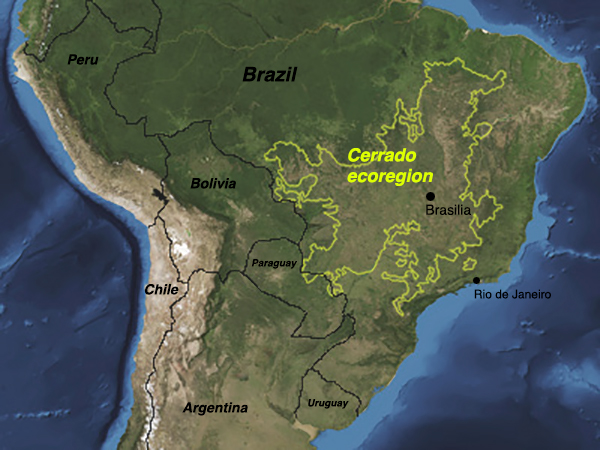
The rough contours of the cerrado ecoregion of Brazil. Estimates of its present size vary because it’s so fragmented that precise measurement is difficult.
Visual: Undark
Almost 30 years later, in 1892, Warming published a book, “Lagoa Santa,” that described in rich detail the cerrado’s unique flora — strange gnarled shrubs, thick-barked trees, waxy-leaved vascular plants — and offered novel hypotheses for how their environment had shaped their features.
In learning to read the cryptic language of its strange plant life, Warming helped give birth to a new science. He would come to be regarded by many ecologists as the founder of their field, and his book would become a foundational text of plant ecology, along with his 1895 book “Plantesamfund” (later translated as “Oecology of Plants”).
But his careful study of Brazil’s savanna failed to elevate it in the national consciousness. The cerrado has many faces: arid tablelands, open grasslands, palm-dotted marshes. But what most people see is its campo sujo, or “dirty fields” — a dry and unruly expanse dotted with low, twisted shrubs. Unlike the Amazon and the Atlantic Forest, the cerrado is not one of the biomes accorded “national heritage” status in Brazil’s constitution.
The name itself captures the nation’s collective indifference: It means “closed.” The cerrado’s 770,000 square miles of acidic, aluminum-rich soils were long written off as worthless. Then, in the 1970s, researchers at Embrapa, the government’s agricultural research agency, figured out how to “correct” those soils with prodigious doses of lime and fertilizer.
Ever since, the cerrado has been open for business.
Brazil is now the second biggest producer — and leading global exporter — of soybeans. Most are grown in the cerrado, which is now being cleared twice as fast as the Amazon. Less than 40 percent — and perhaps as little as 20 percent — remains of the native cerrado’s original extent, which once encompassed an area three times the size of Texas. Estimates of its present size vary because it’s so fragmented that precise measurement is difficult, but what is known is that the cerrado is still home to thousands of plant species that are found nowhere else in the world, along with hundreds of species of mammals and birds.
At current rates of clearing, it could be all gone by 2030.
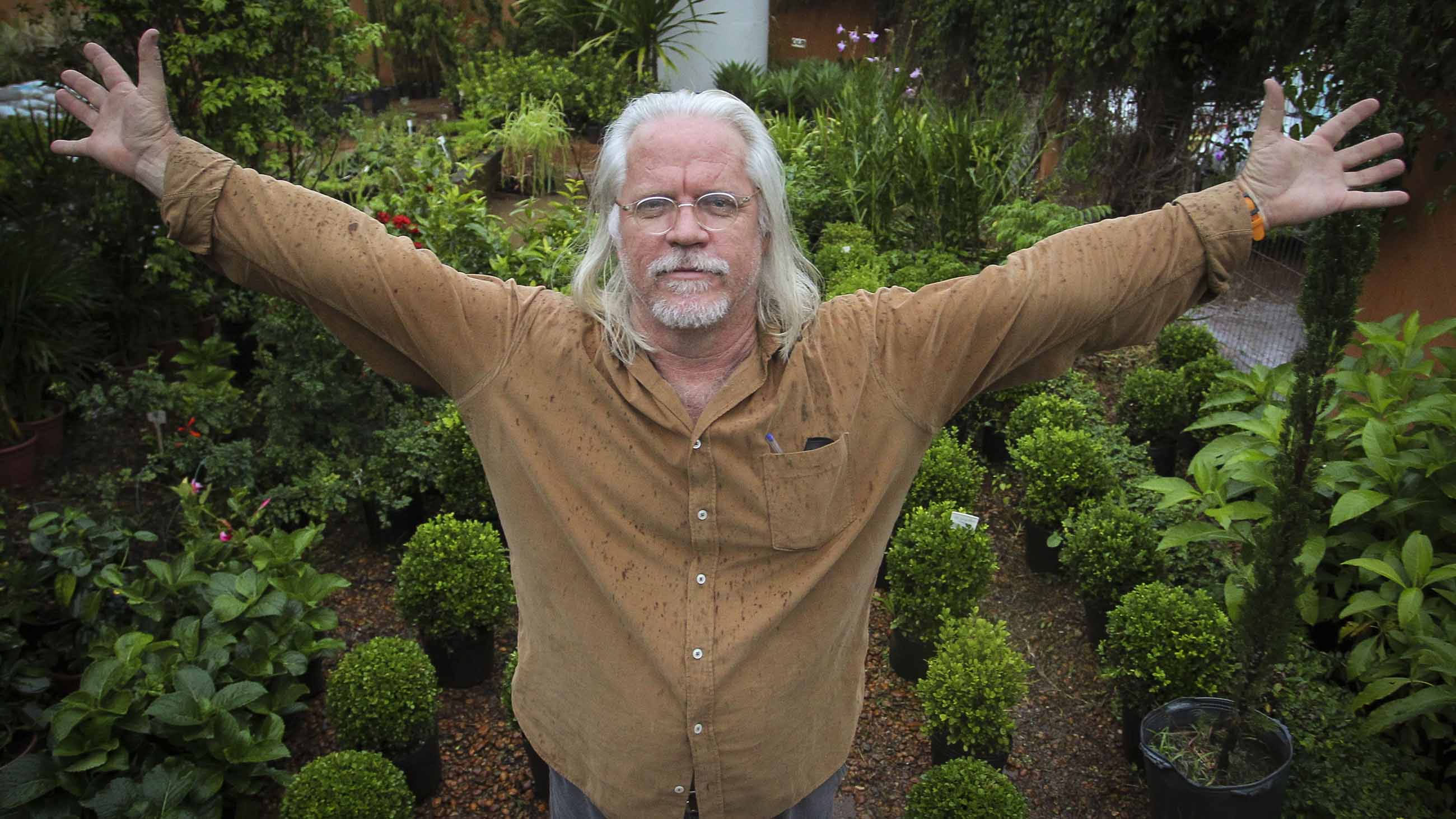
“The problem is the cerrado is very easy to destroy,” says Nicolas Behr, a well-known poet in Brazil who has lived his whole life in the savanna. “People don’t want to identify with the cerrado, because it is the ugly duckling. It’s just a bunch of twisted trees for most Brazilians. They see soybeans and they say, ‘Oh, that’s beautiful, the plantations.’”
Indeed, in the cerrado region, which spans almost a quarter of the country, most Brazilians see the only piston still firing in the nation’s slowing economic engine. Amid the worst recession in its modern history, agricultural producers accounted for almost a quarter of Brazil’s GDP in 2015, and almost half of its total exports. This year, Brazilian farmers are expected to produce a record-breaking soybean crop.
“The soybean makers are amazingly efficient, because they have no sentimental link to the cerrado,” Behr says. “For them, cerrado is just soil to be planted. In the south there was pressure for land. They sold everything and bought land here because it was cheaper.” That they are outsiders, not children of the soil, Behr says, “contributes much to the destruction.”
I asked Roberto Cavalcanti, a professor of ecology at the University of Brasília who has studied the savanna for decades, if he agreed with his old friend Behr. Was the cerrado being destroyed simply because farmers and ranchers — the hard-working risk-takers who flooded into the region — lacked an emotional attachment to the scrubby-looking place?
“He and I disagree somewhat on this,” he said after some reflection. “They have a sentimental attachment to agriculture. And what they see in the cerrado is this vast untapped potential for agriculture.”
When John Cain Carter first moved from Texas to ranch in eastern Mato Grosso state 20 years ago, what he saw was rampant deforestation, a kind of Wild West land grab.
He started a nonprofit organization called Aliança da Terra (“Earth Alliance”) to build a culture of conservation among Brazilian ranchers and farmers, replacing the idea that the nation’s new prosperity depended on clearing useless woodlands. His goal was to slow the destruction just enough so that other forms of value could emerge. The group trains farmers and ranchers to practice better land management, helping them conduct a fuller accounting of their property’s varied “assets” (carbon storage, water quality, biodiversity) and come into compliance with the strictures of the Brazilian Forest Code.
“Conservation has never been profitable, and that’s why no one does it,” he says. “It needs to become quantified, an asset on your balance sheet.”
The Forest Code requires landowners in the Amazon to keep 80 percent of their land in its natural state, while producers in the cerrado are required to leave only 20 percent untouched — an imbalance that, some researchers say, sacrifices the savanna to save the rainforest. Whether to illegally clear land is for many producers a straightforward cost-benefit calculation. If the fine imposed is substantially less than the profit those extra 500 acres-worth of soybeans or pasture-fed beef will bring in an overheated global commodities market, then 500 acres of cerrado are not long for this world.

The fundamental driver of all the rapid clearing, Carter says, “is you’ve got this economic firestorm where open land is worth four or five times the native vegetation.”
Indeed, the world at large — including commodities analysts and institutional investors — tends to see the cerrado as the world’s last agricultural frontier.
The fruits of converting the cerrado are fed into the maw of the global commodity market — soybeans to feed livestock in China, sugar cane to make ethanol to meet U.S. biofuel mandates, beef to feed the world’s growing middle classes. In a bet that these global appetites will keep expanding, the retirement investment giant TIAA-CREF has spent hundreds of millions to purchase cerrado farmland in the frontier states of Maranhão and Piauí.
Turning cerrado into cattle pastures and row crops provides wealthy investors and landowners from São Paulo to San Antonio with opportunities to become much wealthier. And it provides jobs for many rural people, in a country with 12 million unemployed.
At the kitchen table of his neighbor’s modest home in Barreiras, the agricultural epicenter of western Bahia state, Rogerio Lustosa proudly showed me the wildlife photographs he has taken around the cerrado during his years working as a technician for Grupo Mizote, a Brazilian firm that operates many large farms in the region.
“I think 20 percent is not enough to protect the biome,” he says about the Forest Code’s provision for landowners. “But we need to produce. People need to eat. It gives people jobs.” He pointed to himself.
“The vegetation is lost, but the animals can survive.” He paused. “But their numbers are going down.”
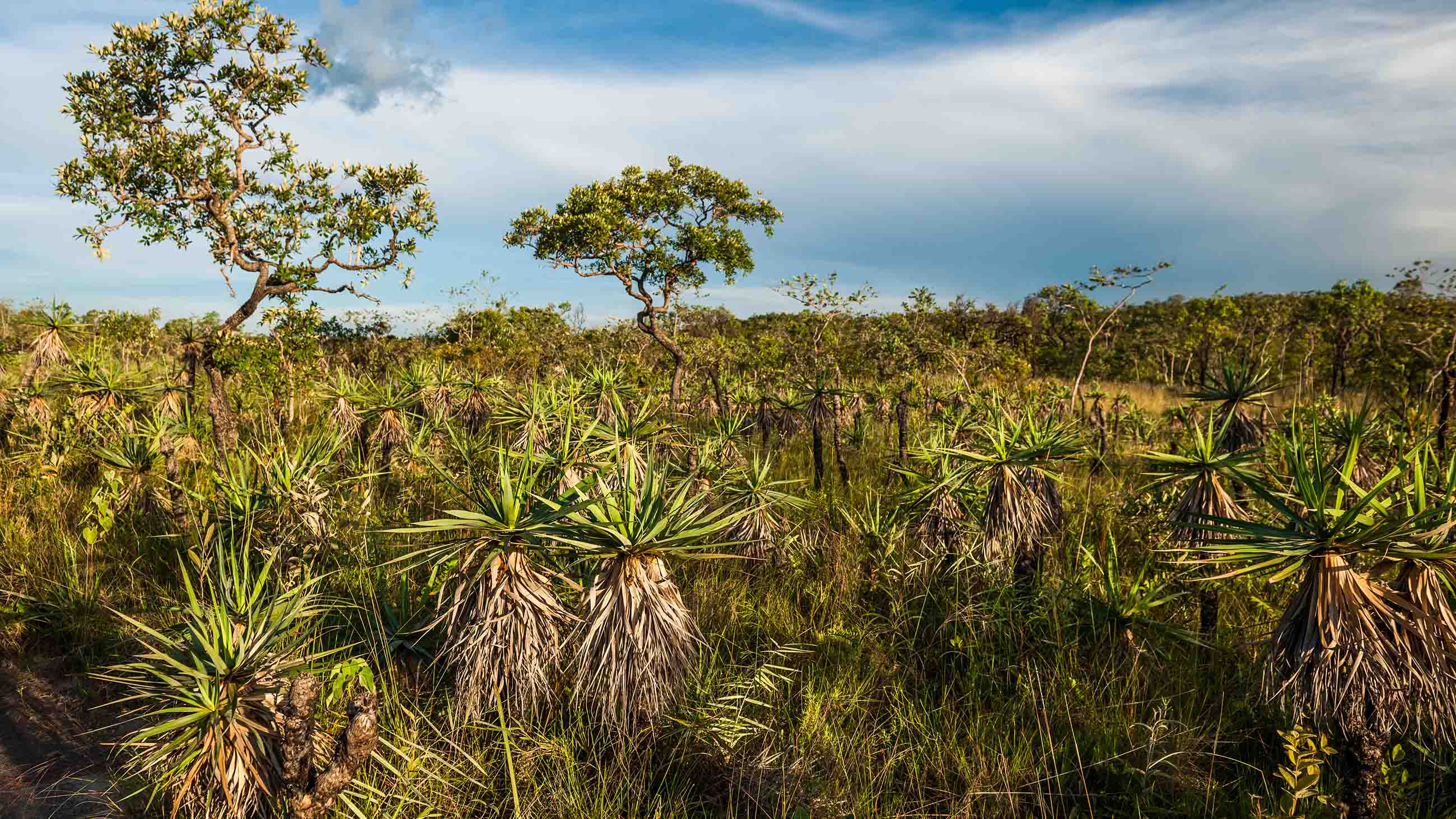
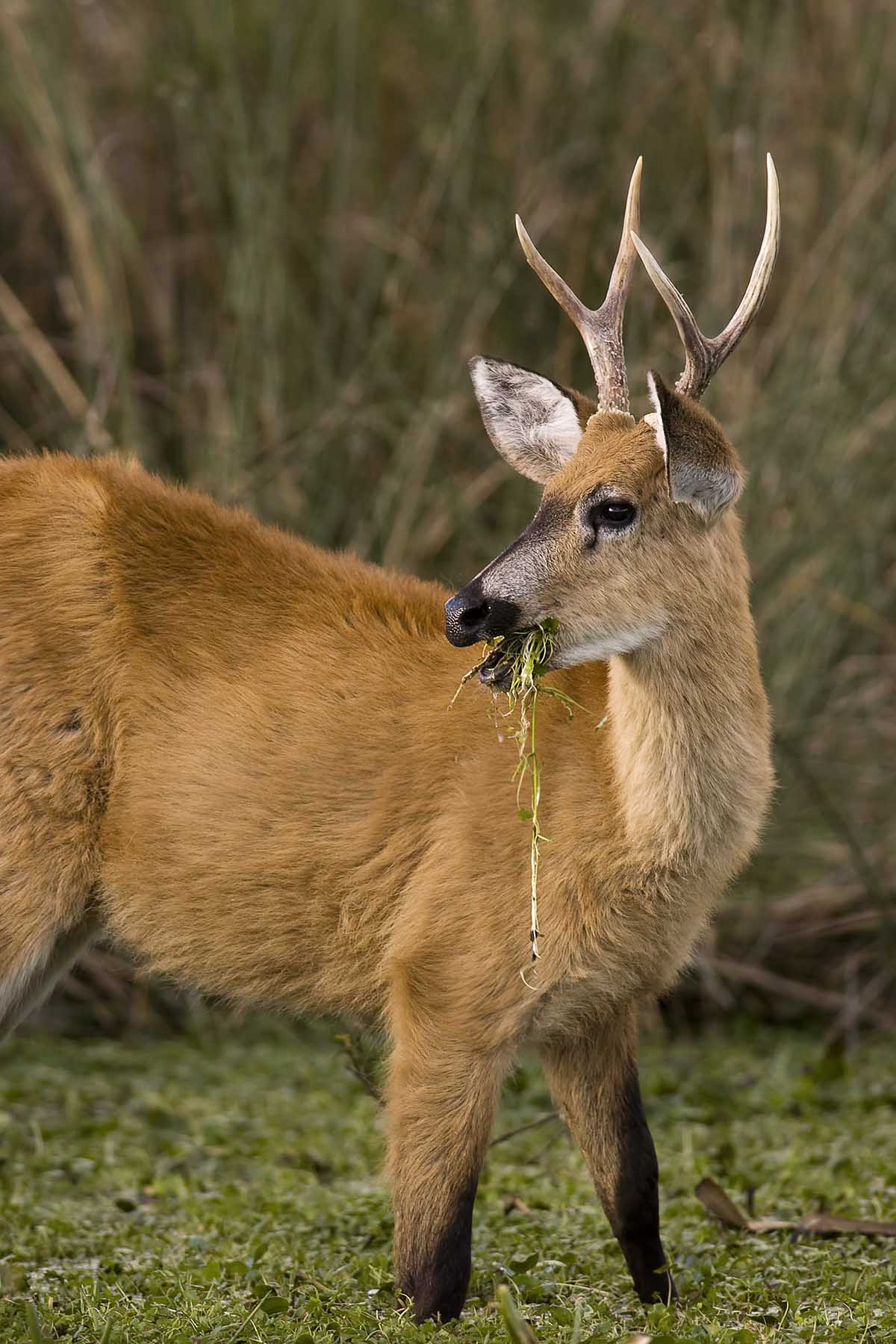

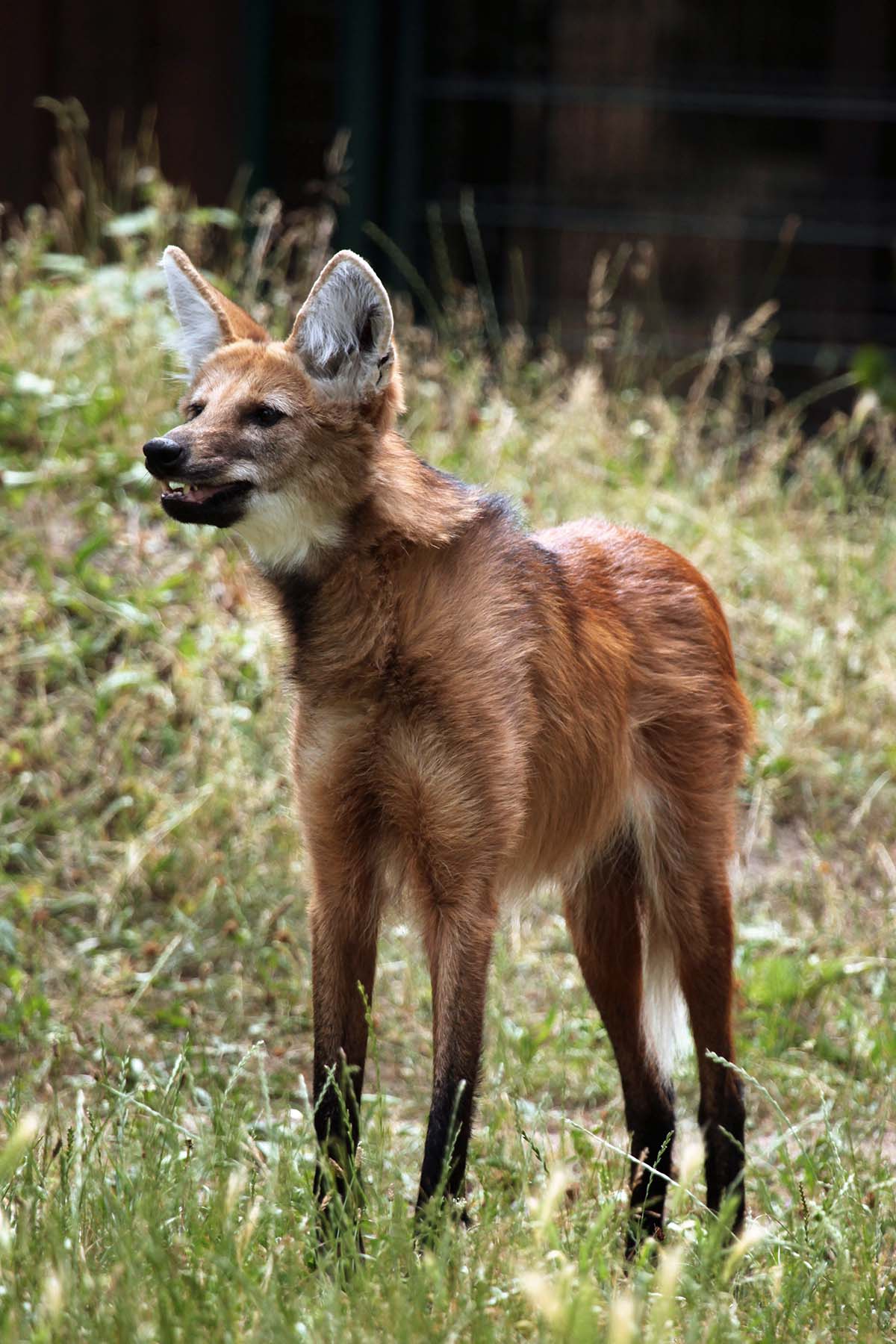
And what, exactly, is lost? We cannot possibly know the extent. The task of studying the cerrado’s rich web of life, which Warming started 150 years ago, is still in its early stages.
What we do know is that the biome is home to at least 11,000 plant species (45 percent of which only exist in the cerrado), 199 species of mammals, and 837 species of birds. There are enigmatic and endangered inhabitants such as the maned wolf, the giant anteater, the marsh deer, the three-banded armadillo, and the blue-eyed dove. Their habitat is fragmented and shrinking rapidly.
Then there are mysterious plants that live fractionally aboveground, but carry out their business mostly below, much in the way mushrooms fruit out of vast networks. There is the Philcoxia minensis flower, which uses underground leaves to trap and digest tiny roundworms — an adaptive strategy necessitated by the extremely nitrogen-poor soils.
There is the barbatimão, also known as the “bark of virginity” tree, which produces an anti-inflammatory extract used to prevent radiation burns in São Paulo’s most famous cancer hospital — just a hint of the vast range of medicinal potential that might be vanishing along with the cerrado.
And there is the Andira laurifolia shrub, which Warming described thus: “In this species, a subterranean axis which is branched, lignified, twisted, and as thick as an arm, gives rise to sprouts that can ramify and reach a height of 0.50 to 1 meter. The base of one of these plants can cover an area up to 10 meters in diameter.”
Warming concluded that “abiotic factors” such as climatic oscillation powerfully shaped this and other cerrado plants. Thousands of years of alternating seasons of torrential rains and blistering droughts leached away most of the nitrogen, potassium, calcium, and other nutrients from the soil, and rendered its top layer highly acidic. Seasonal fires, he speculated, had forced plants like Andira to “seek shelter underground.”
In that hidden world, ecologists see a vanishing trove of genetic information, harboring unknown drug compounds of the future and clues to plants’ inborn resilience in drought and fire – increasingly useful knowledge for our climate-altered age.
Beyond the sheer profusion of endemic species, ecologists like Cavalcanti also see a biome that performs a technically priceless set of ecosystem services. It’s the water tank for a country that has up to 16 percent of the world’s freshwater: The cerrado catches and stores seasonal rains in deep aquifers, filtering and funneling water in every direction as the source of three of Brazil’s major rivers (the Tocantins, São Francisco, and Da Prata).
It is also a vast, hidden carbon sink. Scientists now estimate that two-thirds of the cerrado’s total biomass is underground, in hardy root systems that can go many feet deep — the reason some ecologists call it the “upside-down forest.”
Those roots and symbiotic fungi store large amounts of carbon. They can also access water deep in the ground during the dry season, making it available, via the process called evapotranspiration, to the larger hydrological cycle on which the Amazon depends.
But that, too, is changing.
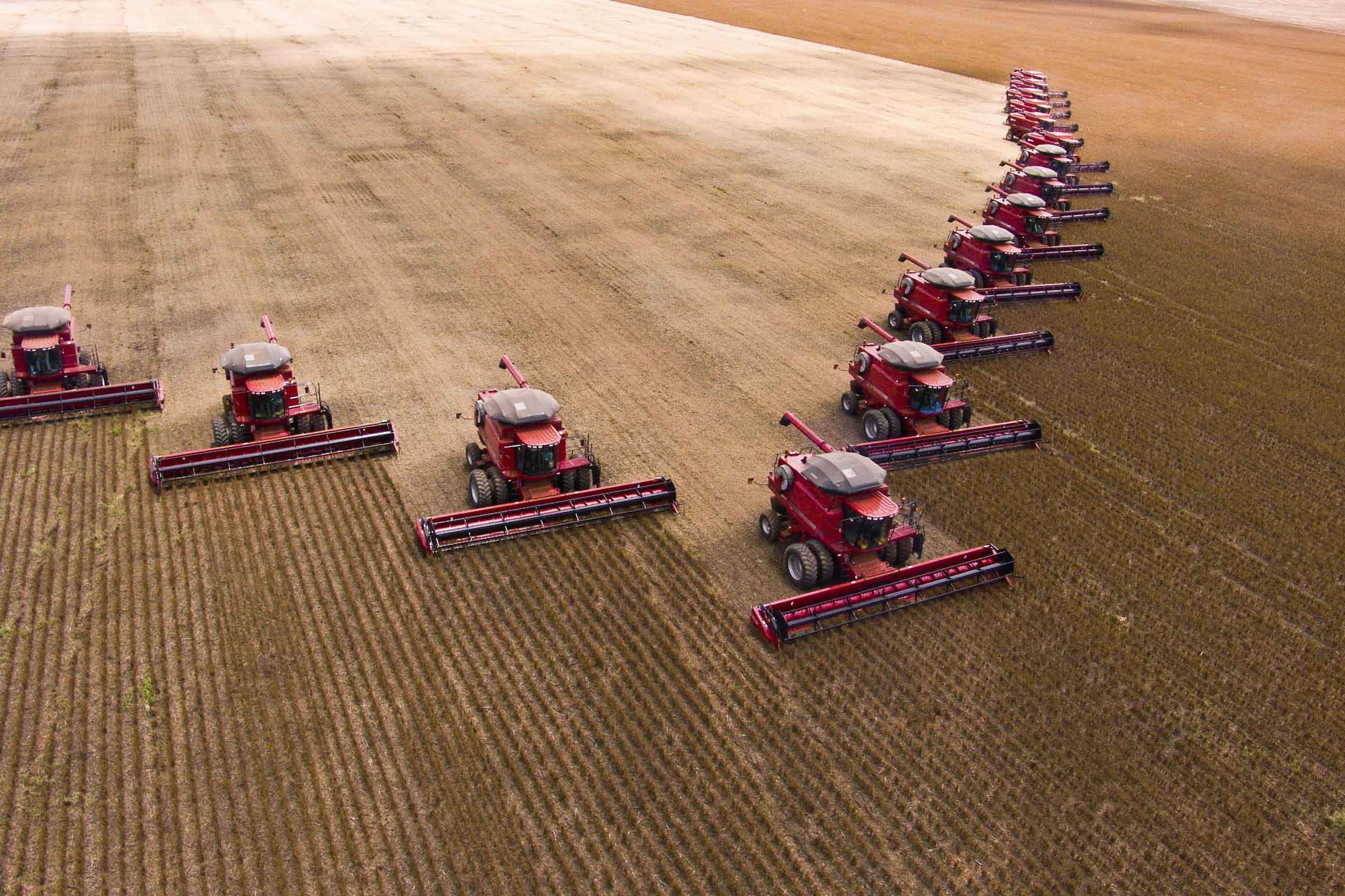
A new study found that deforestation in the cerrado is changing Brazil’s water cycle, raising the likelihood of drought in coming decades. Analyzing satellite images of the “Mapitoba” region in the northern cerrado, the study’s authors found that the area of farmland doubled from 2003 to 2013. During the dry season, new farmland was found to recycle 60 percent less water than native cerrado.
As farmers cleared the native vegetation, they were effectively pulling the rug out from under their own feet. Reduced evapotranspiration can delay the rainy season, potentially spelling disaster for the rain-fed agriculture that now dominates the landscape. These changes are likely to affect water cycling in the nearby Amazon as well.
But this scenario is not inevitable.
José Roberto Rodrigues Peres is the head of Embrapa Cerrados, the government research agency that “corrected” the harsh soils of the cerrado and enabled the agricultural revolution that followed. Embrapa is now studying ways to halt the juggernaut it unleashed, or at least slow it down.
“Agriculture, if it’s not done sustainably, is a source of degradation,” he concedes. “But it’s possible to increase productivity without increasing area.”
He thinks much more intensification — getting more and more food out of land that’s already cleared (including degraded pastures), instead of putting more native vegetation under the plow — is possible. He has a vision of integrated crop-forest-pasture systems, with virtuous farmer-ranchers rotating soybeans, corn, and other oilseeds — engineered by his scientists to be more resilient to drought and more water-efficient — with cattle on existing pastures.
But in the four years since we spoke, extensification has won the day. In 2012, the government relaxed Forest Code restrictions on land clearing. As a result, almost 100 million acres of native cerrado could be legally cleared for cultivation — an area roughly the size of California.
Another recent study examining land use changes in the north of Minas Gerais – just north of Lagoa Santa – found that 42 percent of the original extent of savanna has been cleared since 2000.
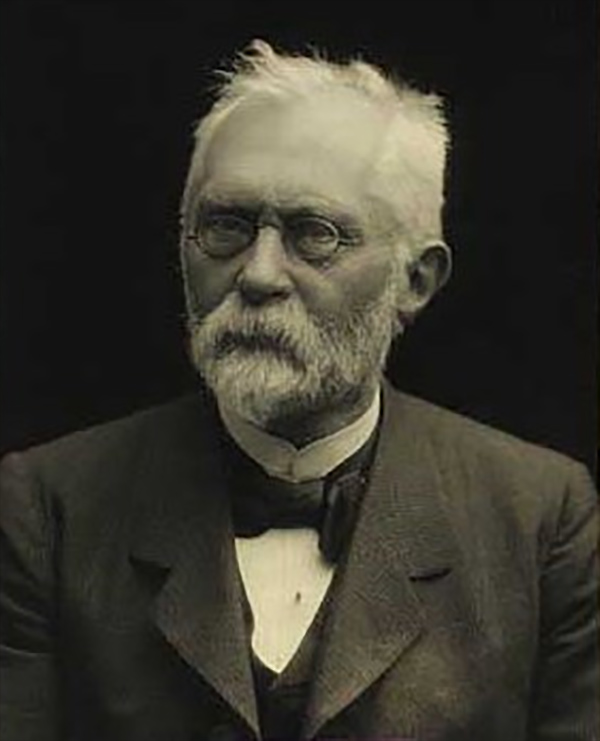
Johannes Eugenius Bülow Warming’s studies of the cerrado would form the foundation for modern ecology.
Warming was perhaps the first biologist to focus as much on communities of species, and on their interactions with their environment, as on individual species themselves.
One of his direct intellectual descendants was the conservationist and forester Aldo Leopold. In his 1949 classic “A Sand County Almanac,” he proposed a “land ethic” that “enlarges the boundaries of the community to include soils, waters, plants, and animals, or collectively: the land.”
“The problem we face is the extension of the social conscience from people to land,” he wrote. “No important change in ethics was ever accomplished without an internal change in our intellectual emphasis, loyalties, affections, and convictions.”
That change doesn’t come easily. One day while driving through western Bahia state, traversing a landscape one could easily mistake for Iowa, I spent a day at Parque Fioravante Galvani. The product of a partnership between the city, Conservation International, Monsanto, and the Brazilian fertilizer company Lina Galvani, the center pays local people to collect seeds from the dwindling varieties of local plants, and hosts more than a dozen threatened cerrado animals in a small zoo.
Márcia Xavier, the environmental education coordinator for the park, runs programs for local schoolchildren and members of the public throughout the week. Farmers rarely come. “They’re not interested,” Xavier says. “It’s too hippie for them, too strange.”
She showed me around the zoo, and we stopped outside a cage where an anxious maned wolf, an animal as big as a Great Dane but with a foxlike face, paced back and forth.
It was one of four of the animals there sponsored by Grupo Iowa, an agricultural firm with big holdings in western Bahia state. “We partner with companies, they provide the money,” Xavier says. “For example, Transcerrado built the parrot enclosure. Nutrin provides food care for the birds.”
As she explained the arrangement, I had a clear vision of the logical end of the place that gave birth to ecology: the last remnants of endemic cerrado life confined to cages and seed drawers, tidy and well maintained, paid for by the globally traded firms whose existence is predicated on their removal.

“Nothing is stronger than reality,” Behr says with a sigh. Sitting in the office of the plant nursery he runs on the outskirts of Brasília, Behr gazes at the satellite images of the acres surrounding his boyhood home, the cerrado town of Diamantino. Where once there were lagoons and grassy hills, there are now endless rectilinear patches of soybeans.
His verdict could be a fitting epitaph for his beloved cerrado. It might also serve as an epitaph for the science that was born on the savanna, which couldn’t teach us fast enough how to see the “assets” under our feet.
Or maybe we were always going to be hopeless students. The upside-down forest is hard to see clearly, so it’s even harder to see how much we might depend on it.
To really see the cerrado in all its wondrous complexity, you would need to walk at the pace of a young Eugenius Warming, pausing to examine the arm-thick root structure of the Andira laurifolia. Or pull over your car and wade up to your waist into a marsh to admire a rare variety of palm, as Behr sometimes does. (“He’s a member of this international palm association,” his wife told me, “and they write each other these letters that begin ‘Dear Palm Lover…’”)
The market — animated by our desires — moves so much faster than our learning curve. Our loyalties are to our own interests. Our affections rarely extend to scrubby woodlands and carnivorous plants. Our convictions don’t run that deep underground.
But Behr has what could be an alternative epitaph.
He wrote what is probably the most famous poem about the cerrado. It refers to one of Brazil’s most celebrated soccer players, Garrincha, who was born with bowed and twisted legs. When people watched him play, they saw not deformities but a player of uncommon skill and grace.
The poem holds out hope that we might yet look closer, and learn to see the scrubby cerrado in a whole new light, while there’s still enough of it to save:
| Nem tudo Que é tortoÉ errado Veja as pernas Do Garrincha E as árvores Do cerrado |
Not all That is crooked Is wrong Look at the legs Of Garrincha And the trees Of the cerrado |
Jonathan Mingle is a freelance writer whose work has appeared in The New York Times, The Boston Globe, Slate, Quartz, Atlas Obscura, and the Los Angeles Times. He is the author of “Fire and Ice: Soot, Solidarity, and Survival on the Roof of the World,” about the health and climate effects of black carbon pollution.
Reporting for this essay was supported by the Middlebury Fellowship in Environmental Journalism.










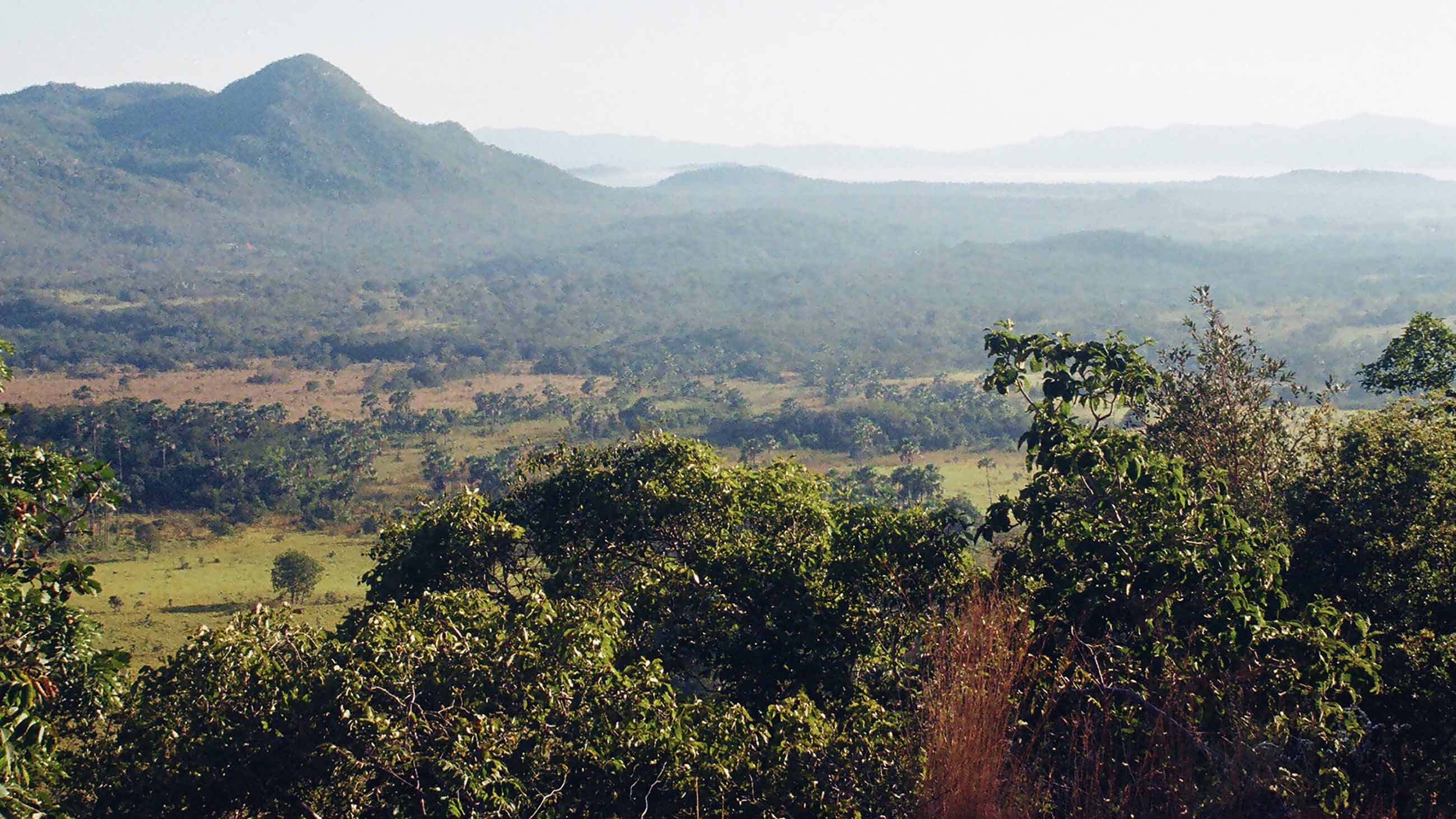
Comments are automatically closed one year after article publication. Archived comments are below.
ikt is disgusting that people only look for profit. we need nature but nature does not need us…..
I appreciate your article! I’m writing a cookbook about food from the Pantanal region where i lived for a little while on a ranch by the Rio Negro. My thinking is that Brazilians’ sentimental attachment to the land exists now mostly in their deep attachment to the food from those times and places. Even – especially? – in cities, people want puchero and feijoada and rapadura de abobora and chipas!If we still have these taste memories, all is not lost.
SIM é muito triste ver esta situaçao, eu amo o cerrado e tento preservar,comecei coletar sementes tambem. A duas decadas atras estive em Atlanta, Ga só vi pinheiros e pensei a mesma coisa como pode alguem destruir o seu bioma e conviver com pinheiros, não tem cheiro Da Mata que sinto aqui em Goiás. Sentia uma imensa tristeza e lembrava do meu cerrado . Cada pessoa tem que fazer sua parte.
Excellent article. It clearly shows what is happening to the most diverse savana of the world. The Cerrado is the Brazilian biome that most loss area. More than 1 million sq. km were converted into agribusiness, afforestation and minerals. The costs you all know. But what intrigues me is the lack of interest and coordination to deal with the problem in Brazil. I am sure that only with inter nation pressure Brazilian authorities will show signs of intelligence and save whatever is left! We will keep pounding them, but need help to push forward these action!
Soy beans are used to feed livestock, not people. This land is destined to become hamburgers for people who are getting ill from eating too much meat. The love of money is killing us and the planet we live on. There must be a sustainable way to live that most people will embrace.
Correctioin: The sugrcane/ biofuels mentioned are being produced primarily for Brazilian domestic consumption not for US consumption to meet the Renewable Fuels Standard.
This is an astoundingly insightful and disturbing article. As a Peace Corps volunteer, I arrived in Jaborandi, on the eastern edge of the Cerrado in western Bahia, in 1965. There were no soybean or cane fields, only cattle and small farms of wheat, dry rice, and beans grown in a feudal economy. On my return in 2013 after a career in ecology, I was struck by the scale of ecological devastation in and around the Cerrado. It is hard to imagine Brazil ever recovering from what extensive agriculture has done to the water cycle and the other ecological processes of the Cerrado. That the Cerrado is linked hydrologically to the Amazon must terrify Brazilians who care for the future of their beloved country.
With a little bit of luck, this will be done before 2030.